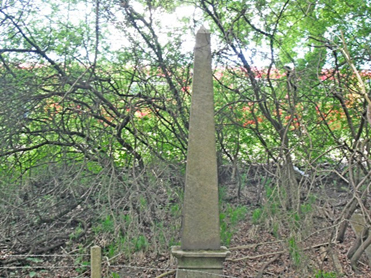Coal Posts

The consequences of taxation have made an impact on the British countryside, whether it be attempts to avoid or mitigate tax liabilities in window blocking and building crinkle-crankle walls or building structures as a visible reminder to merchants of their tax obligations.
Following the Great Fire of London in 1666 the Corporation of London, having debts amounting to around £240,000, was authorized under the First Rebuilding Act of 1667 to levy of one shilling a chaldron, roughly 25 hundredweight, on all coal brought into the Port of London between Yantlet Creek in Kent and Staines in Middlesex. The monies were to be used to widen and rebuild the streets and some buildings and to erect a “Remembrance” of the fire, what we now know as the Monument.
A second Act, passed in 1670, increased the duty to three shillings, the monies raised to fund the rebuilding of the structures of fifty-one of the 86 churches destroyed in the fire and some city properties such as Guildhall, the City’s markets, and Newgate Prison. During the next couple of centuries the tax on coal continued to be levied, the rates varying from to time, and the monies raised were used to further improve London, including building Blackfriars Bridge, Holborn Viaduct, making improvements to Temple Bar and, appropriately, a new Coal Exchange, opened in 1849.
When the original Acts were passed, coal was only brought to London by sea. Known as seacoal, duties were paid at the Port of London before the ships were unloaded. However, the emergence of new form of transport, initially barges and then steam engines, offered merchants different ways to transport coal to the capital. This posed the tax authorities a dilemma: how were they to collect the duties for coal transported this way?
Initially, the Grand Junction Canal, whose existence was bitterly opposed by the east coast shipping companies, was precluded from carrying coal any further than Langleybury in Hertfordshire. However, by 1805 they were allowed to carry up to 50,000 tons of coal, culm, or cinders per annum past that point subject to the payment of the appropriate coal duties. A boundary mark was erected on the tow path at the north-east point of Grove Park in Watford and officials were stationed there to collect the duties and record the tonnage. A similar arrangement was put in place west of Staines bridge on the Thames for coal transported from the west.
As for the railways, the London and Birmingham Railway Act (1845) required a stone obelisk bearing the City’s coat of arms in cast-iron to be erected at the southern entrance to the Cashio Tunnel north of Watford Junction station to mark the spot where coal duties became due. A similar obelisk, on the east bank of the River Colne near West Drayton station, was erected by the Great Western Railway and, before 1851, any other railway company bringing coal into London, had to follow suit.
The railway companies were responsible for paying the duties on coal brought beyond these points and to pay them to the Clerk of the Coal Market, the quid pro quo being that they were allowed 500 tons of duty free coal a year to fuel their locomotives in the London area.
As we shall see next time, 1851 marked a sea change in the arrangements.



